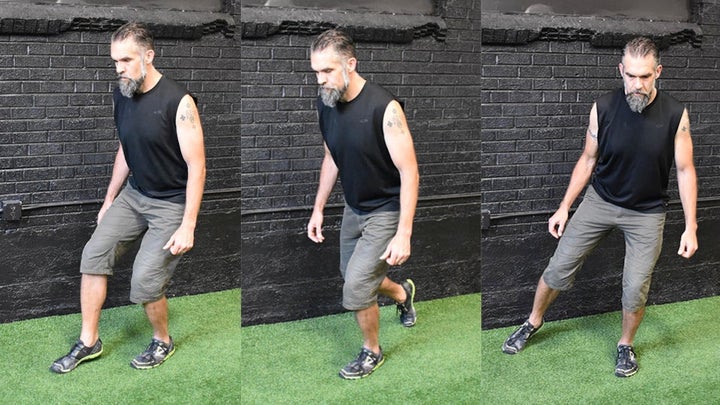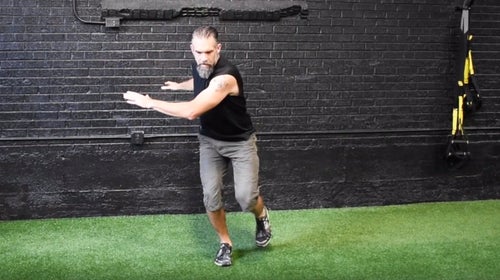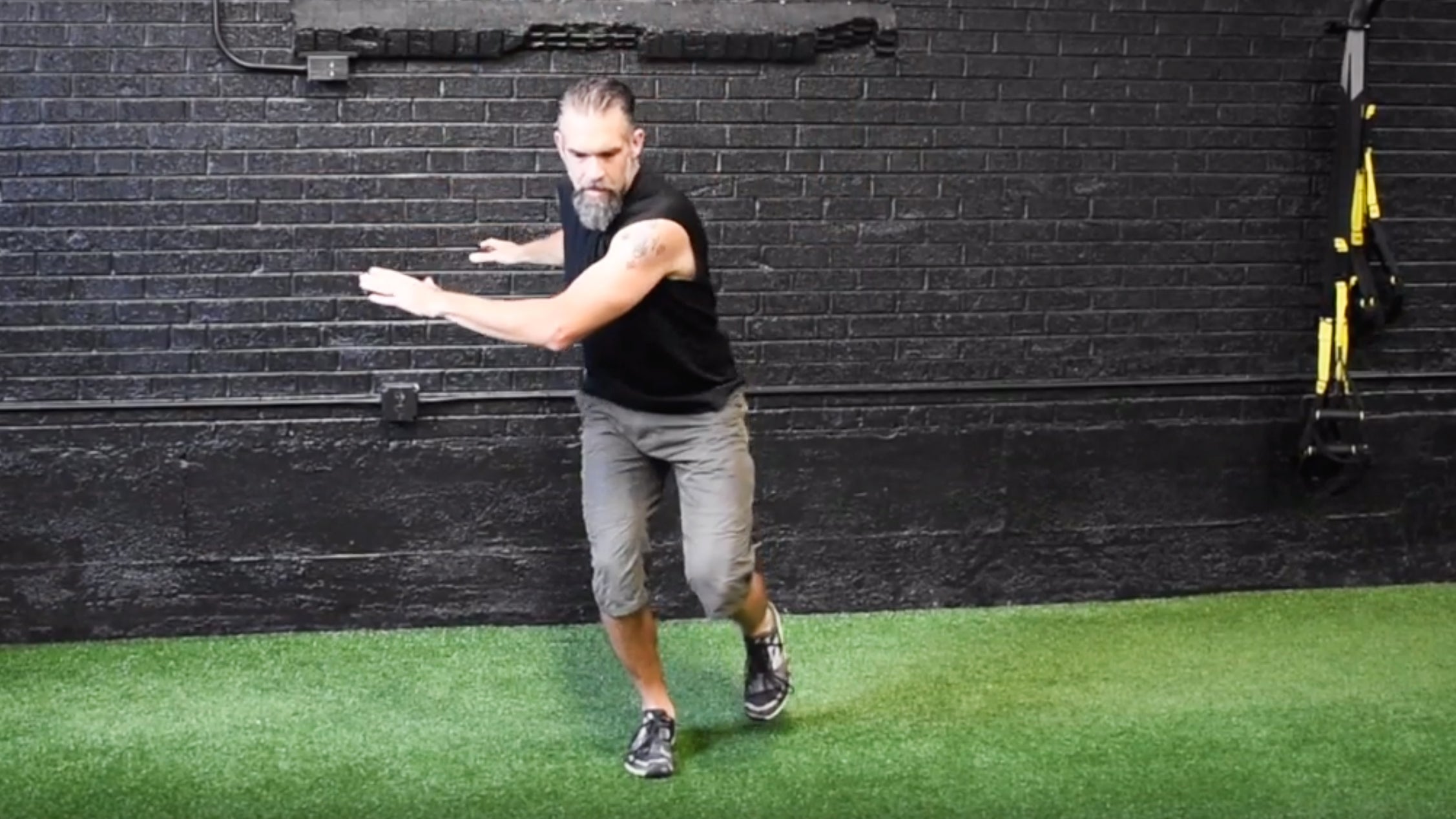Consider three truths:
1) Running is a series of hops from one foot to the other. Upon landing, you perform a partial, one-leg squat in preparation for the next hop.
2) Research suggests that strength training aids running performance, and
3) The principle of specificity says that to improve at a given physical task, training should resemble that task.
Given these truths, it seems clear you can benefit by including single-leg squats as part of a regular strength program. The hop-and-land sequence of running demands strength and stability in order to perform well and avoid injury.
Creating good movement patterns isn’t just about repeatedly executing the exact same movement, however. The ability to adapt and use several different movement strategies to accomplish the task of running is crucial. By performing a variety of single-leg squats, you can build a diverse movement vocabulary to adapt to and handle various surfaces, terrain, speeds, and levels of fatigue.
Single-leg Squat Variables & Variations
The basic single-leg squat can be made more or less challenging by altering stability, load, range of motion, squat tempo, and limb position. You can manipulate these variables to impose a wide range of demands on the nervous system, muscles, bones, and joints.
Basic Single-leg Squat
To get stronger, the exercise must challenge—but never overwhelm—your current ability. Always obey this rule: Be in control of the exercise. Don’t let the exercise control you.
Hundreds of variations are possible. Here we’ll present key variables and several ways to manipulate them.
Stability
You can add or subtract stability from the single-leg squat using your arms or your non-working leg. Use the minimal amount of additional stability that you need to make the exercise challenging, yet achievable. Don’t use more stability than needed. Note that any changes to other variables will also change the stability of the squat.
Any change in stability demands different movement and stability strategies from the nervous system. Different stability strategies also change how forces move through the body. Lower body stability help (bottom-up strategy) means the upper body will be a little less stable. Upper body stability help (top-down strategy) means the lower body is a little less stable.
Lower body stability help
Use the non-working foot to help ensure you do the exercise successfully. By varying the position of the non-working foot, you create different loads and stresses through the working leg. You can do single-leg squats with forward leg help, rear leg help or lateral leg help.

Upper body stability help
You may place your hand or hands (one hand is less stable, two hands are more stable) on a wall, chair, or any other source of support to stabilize your single-leg squat. Varying the position of your hands—high or low, in front or behind, to either side, or combinations of each—creates different movement demands.
Single-leg squats using a TRX suspension trainer
Load
Loading makes the exercise more challenging. Wear a weight vest, put a barbell on your back, hold kettlebells, dumbbells, or other weights in your hands. You don’t need special equipment: Try holding milk jugs in your hands or placing a bag of dog food on your shoulders. You can also use an asymmetrical load to affect stability. Hold a dumbbell or kettlebell in one hand but not the other, or try the single-leg tubing squat.
Single-leg squats using a ViPR loaded movement tool
Range of Motion
Typically, a short-range or shallower single-leg squat is easier than a deeper, longer-range squat. More stability enables a longer range of motion. You can use any of the above stability strategies to reach greater depth.
The pistol box squat allows runners to adjust range of motion so that the exercise is both doable and challenging. The height of the box determines the range of motion and difficulty of the squat. Use a surface that’s just at the edge of the controllable range. Use precise control and sit, not fall, to the bottom.
Pistol Box Squat
Tempo
Different movement tempos require different coordinative demands. Start with slow movement which demands precise control, and progress to fast or “sport-speed” movement. Master slow-speed, high-quality squatting before increasing speed. Always be in control of movement, no matter the tempo.
Position
Depending on where the non-working leg and/or the arms are positioned, the load on the squatting leg shifts, changing how the muscles, joints, and nervous system work together to stabilize and move successfully. You can move your arms and legs in three different planes: front/back (sagittal plane), side-to-side (frontal plane), and in left/right rotation (transverse plane.) The combinations of leg and arm positions are endless.
Multi-directional single-leg squat with a variety of leg and arm positions
Start Squatting
The variables available for single-leg squatting are nearly limitless, but don’t let that confuse you. Pick one type of single-leg squat and work on it. Master it. Then play with the variables. You don’t need to do every type of squat every workout.
You may combine variables. For example, you may do a squat using your right leg, with a barbell on your back, short range of motion, fast tempo, with your left leg reaching left. Or, use the TRX for added stability and drop deep into a pistol squat.
Work on single-leg squats 2–3 times per week. Work to a high level of exertion in 3–8 reps for 2–5 sets. Don’t turn weight training into endurance training with high-rep squatting. Adding single-leg squats to your routine won’t take much time, but you will reap high rewards for your running stride.


